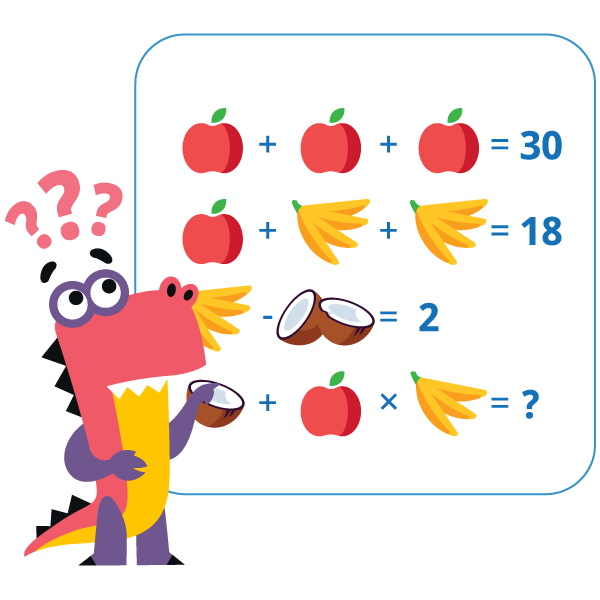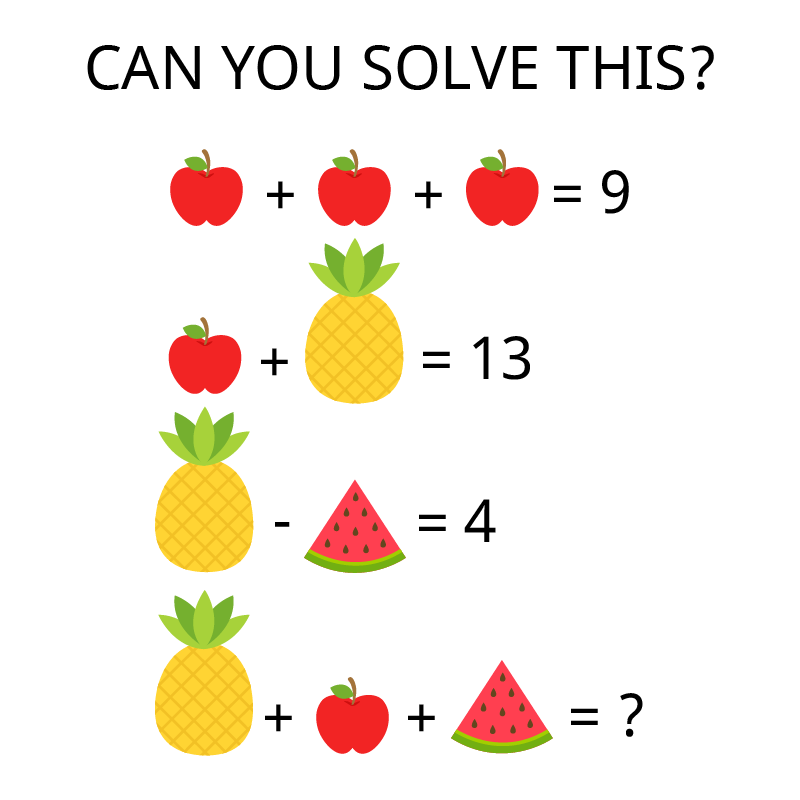Challenging Puzzles for Kids
3 Benefits of Brain Teasers for Kids
Learn the benefits of brain teasers plus discover some that you can easily incorporate into your classes.

Do you use brain teaser games for kids in your classroom? If you don’t, you might consider adding some brain teasers into your everyday routine. They offer important benefits, but are also loads of fun!
Below, learn three reasons why math puzzles and brain teasers for kids are beneficial:
1. Improve Attention Span
Brain teasers require some serious concentration to figure them out. The challenge of a brain teaser encourages children to focus their attention for long periods of time. In fact, research proved that doing brain teasers helped preschoolers improve their attention spans. In this study, some children followed the regular curriculum. Others were given brain teasers along with the regular curriculum. At the end of the study, attention span was tested. Children in the experimental group performed better than those in the control group.
1. Improve Attention Span
Brain teasers require some serious concentration to figure them out. The challenge of a brain teaser encourages children to focus their attention for long periods of time. In fact, research proved that doing brain teasers helped preschoolers improve their attention spans. In this study, some children followed the regular curriculum. Others were given brain teasers along with the regular curriculum. At the end of the study, attention span was tested. Children in the experimental group performed better than those in the control group.
So, if you need your students to improve their attention span in other areas such as math or reading, try incorporating some brain teasers into your routine!
2. Visual Perception
Another study showed that mind games and brain teasers can improve visual perception. This is an important skill that can help kids in many areas including solving math problems, understanding geometry, reading, writing, and even cutting and pasting.
Another study showed that mind games and brain teasers can improve visual perception. This is an important skill that can help kids in many areas including solving math problems, understanding geometry, reading, writing, and even cutting and pasting.
3. Improve Creativity
Brain teasers and puzzles also require kids to think creatively. Solutions aren’t always what first comes to mind and often require lateral thinking and creative solutions. So, brain teasers encourage creative thought and out of the box thinking skills. In fact, brain teasers are often used to measure creativity levels and skills in studies. For this reason, they are also a good way to practice creative thinking.
Brain teasers and puzzles also require kids to think creatively. Solutions aren’t always what first comes to mind and often require lateral thinking and creative solutions. So, brain teasers encourage creative thought and out of the box thinking skills. In fact, brain teasers are often used to measure creativity levels and skills in studies. For this reason, they are also a good way to practice creative thinking.
Examples of Brain Teaser Games for Kids
There are plenty of different types of brain teasers for kids that you can use in your classroom. Here are a few ideas to get started:
– Sudoku
This puzzle involves using the numbers 1-9 within a series of boxes. Ranging from easy to difficult, this game is good for children and adults alike.
– Adding Fruit
Teach algebraic thinking with these puzzles that replace numbers for symbols such as fruit.
There are plenty of different types of brain teasers for kids that you can use in your classroom. Here are a few ideas to get started:
– Sudoku
This puzzle involves using the numbers 1-9 within a series of boxes. Ranging from easy to difficult, this game is good for children and adults alike.
– Adding Fruit
Teach algebraic thinking with these puzzles that replace numbers for symbols such as fruit.

– Crossword Puzzles
Get kids thinking about words with these fun puzzles.
– Matchstick or Toothpick Puzzles
These puzzles involve a challenge to move sticks to create a new picture or to spell a word, or similar. For example:
Get kids thinking about words with these fun puzzles.
– Matchstick or Toothpick Puzzles
These puzzles involve a challenge to move sticks to create a new picture or to spell a word, or similar. For example:

You can provide each student with the toothpicks to solve their own puzzles that you put on the board or provide on cards in a center.
– Origami
Although not a puzzle per se, origami requires children to follow careful folding instructions to achieve a result. The instructions can be quite complex, making it almost a puzzle!
– Tangrams
Tangrams are another great puzzle or brain teaser to add to your classroom. With these puzzles, children must create a shape using 7 shaped tiles. The shape they must create is a shadow and doesn’t show the breaks between the shapes. So, it can be very challenging! However, usually, a solution is provided should students struggle. You can buy a set or make your own sets out of foamy paper or hard cardstock.
Although not a puzzle per se, origami requires children to follow careful folding instructions to achieve a result. The instructions can be quite complex, making it almost a puzzle!
– Tangrams
Tangrams are another great puzzle or brain teaser to add to your classroom. With these puzzles, children must create a shape using 7 shaped tiles. The shape they must create is a shadow and doesn’t show the breaks between the shapes. So, it can be very challenging! However, usually, a solution is provided should students struggle. You can buy a set or make your own sets out of foamy paper or hard cardstock.
Brain teasers for kids are great classroom warm-ups, center work, or “done” work. How will you use challenging puzzles for kids in your classroom?
